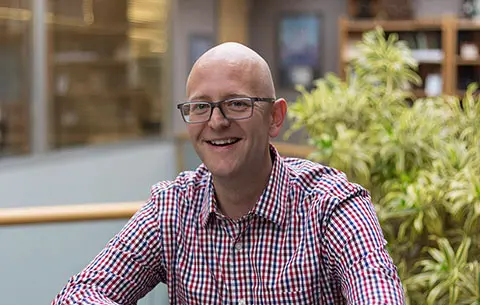Viewpoint: Planning for resiliency amid pandemic, extreme weather is key for Oklahoma cities
By: Paul Ryckbost
Oklahoman, October 8, 2021
Resiliency is often defined as the ability to be prepared for short- and long-term stresses and ensures a community can function during and after an impactful event. As an urban planner and an engineer, I simply define it as a factor of safety on quality of life.
As the pandemic has progressed and extreme weather events have occurred increasingly across the globe, the need to plan and design for resiliency, inherently placing the flexibility to adapt at the forefront, has grown. In fact, there are indicators stressing even stronger needs for resiliency and reformatting development in order to minimize or eliminate future risk.
In response to the need for resilient urban design, large, complex corporate facilities are waning while there is an increase in the 15-minute city, or clusters of space where we can travel in a 15-minute radius for our daily needs. Within this radius, we can work from home and visit retail stores, along with other daily activities, or go to smaller satellite offices and co-working spaces in the same area. The 15-minute city can provide resiliency by enabling and reinforcing clusters of activity, whereby everyday services are closer to people.
Planning a resilient community is more than just land use and transportation alternatives. It requires planning for economic diversity and growth, planning for new and innovative energy production and delivery, and planning for people. A resilient community is a collective, an interconnected system able to support itself in times of need.
The city of Moore has experienced exceptional growth over the past two decades. Its location just south of Oklahoma City provides a top-notch education system, great place to raise a family, strong local economy and relatively low cost of living that continues to draw thousands of new residents to the city every year. However, as all Oklahomans know, Moore also has been the witness to multiple tragic, extreme weather events, which have affected both physical and social infrastructure. Moore’s Comprehensive Plan folds resiliency into each aspect of the plan. It is an effort that identifies an understanding of the city’s social, political and economic systems as supported by larger goals such as land use, growth, economic development, open space and natural resources, housing and neighborhoods.
Each aspect of the strategy and policy section of the plan addresses a resiliency touchpoint, highlighting ways to build resiliency across Moore. Moreover, the plan incorporated detailed input from a broad cross-section of stakeholders and leaders, in both the public and private sectors, which effectively assist in developing resiliency efforts highlighting the desired and anticipated performance of the built environment. Moore desires to be a standard-bearer of resiliency in Oklahoma and the nation.
It is deeply unfortunate that a worldwide pandemic accelerated the need for communities to become resilient, but within this, planning can and does mitigate chaos and provides opportunities for economic and public improvement. With planning for resiliency, communities grow and evolve despite outside forces.
Paul Ryckbost is the vice president of Energy & Utility Solutions with Guernsey.




